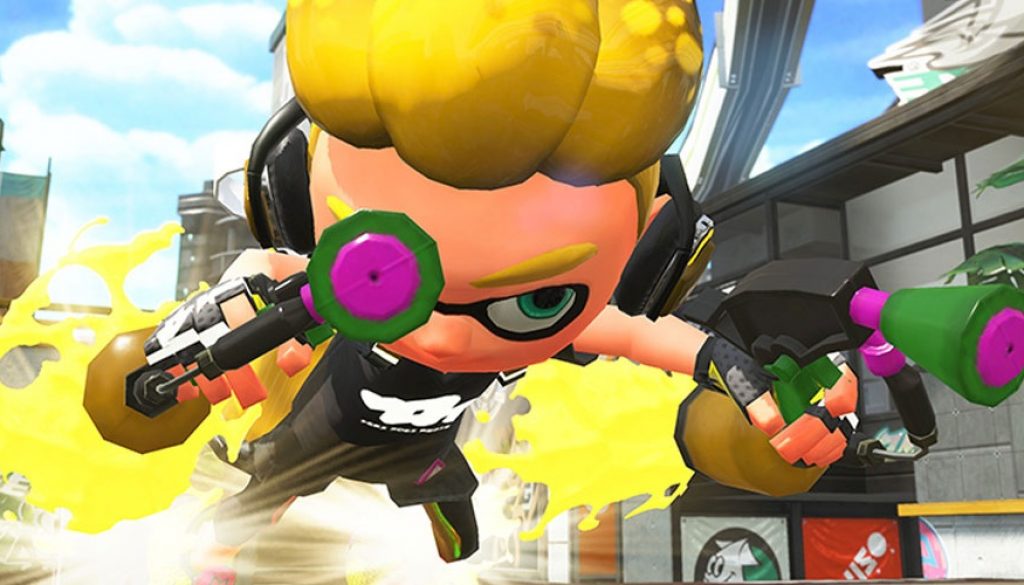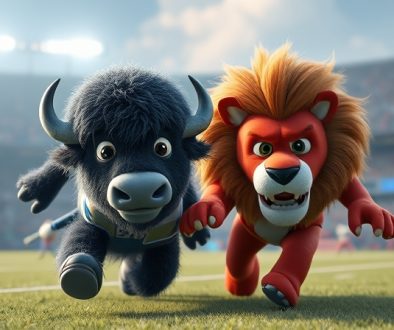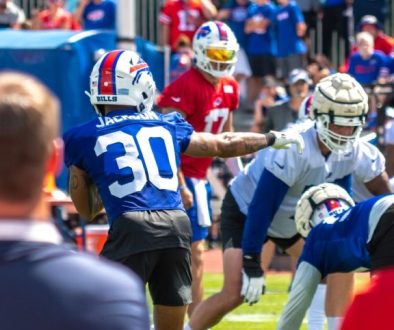Splatoon 2 – First Thoughts
I spent over 60 hours playing the original Splatoon on the Wii U. I found the game’s control scheme to be intimidating, at first, but within an hour or two, it felt more natural than using an analog stick. After overcoming that initial hurdle, the game opened itself up as one of the best shooters I’ve played in years, combining a fun, kid-friendly aesthetic with some serious strategy and competitive gameplay. Top that off with some of the best music to come out on any Wii U game and Nintendo had a recipe for success.
I never reached the top of the rankings, never beat all the Amiibo special stages, and never maxed out my money. I never got good with the E-Liter, never bothered much with competitive play, but I had a fantastic time with the game, playing both with friends and with randoms online.
So, when Splatoon 2 was announced, my excitement was off the chart. The footage of the game they showed in the reveal trailer blew my mind. Explosions, jetpacks, all new weapons, crazy hairstyles, new game modes- well, you get the point. I was hyped.
So is Splatoon 2 a worthy follow-up to the Wii U’s best seller? Short answer, yes. Long answer? Well, keep reading, squiddo.
Note: I’m not going to be covering the co-op mode in this article because it simply hasn’t been out long enough. I’ve played it several times but, because there’s only one new scenario a day, I feel like I haven’t gotten the full experience just yet.
Splatoon 2 feels at first like an expansion pack for Splatoon, rather than a full sequel. On a surface level, many features seem the same, or similar, to the first game. Online battles can be played casually or competitively, laying down ink charges up your supers, and you can even find a healthy selection of dumb memes in Inkopolis Square drawn up by people who have spent waaaaay too much time drawing photorealistic pictures of squids.
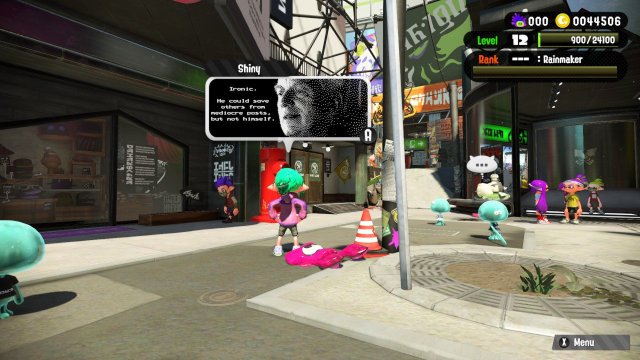
However, after spending a few hours with the game, the contrasts between Splatoon 2 and its predecessor become more apparent. The changes between Splatoon and Splatoon 2 run deeper than “we added more weapons” and “there is a horde mode in this one.” There’s actually a lot to cover here, so I’ll break it down into chunks starting with what I feel is the biggest, and yet most subtle, change to the Splatoon formula – the Stages.
Stages. Stages have changed… for the better. Don’t get me wrong, I’m gonna miss a few stages from Splatoon like Hammerhead Bridge and Mahi-Mahi Resort, which are missing from the new game’s roster, but Splatoon 2’s stage designs have drastically improved on the designs from the original. The reason for this is a serious shift in map design paradigm.
Splatoon’s maps can be categorized two ways: linear straight-shots towards the center of the map, or sprawling maze-like areas full of high walls. Now, these aren’t bad things, they just are what the game is. You’ve either got long hallways with a few vertical paths, or big tall walls that you can’t climb up. The game was balanced around this type of map design, and all was well.
Though we’re still early in Splatoon 2’s development, I can already see the map designers taking a different tack with the game. Maps in the sequel are wider, and flatter, with large open centers that play to the advantage of many of the new super abilities.
The map Humpback Pump Track is a fantastic example of this design paradigm, as the player is able to see most of the stage from just about any of the tall ridges that surround the central arena. It’s easy to see where the enemy is coming from, and get a feel for where you, the player, should be. More importantly, though, it’s easier to get a bead on targets with your Inkjet rockets or Tenta-missiles due to the lack of high walls. In fact, most stages follow the formula shown in this one: low walls, and a central arena. It seems like a small change, but it makes a world of difference.
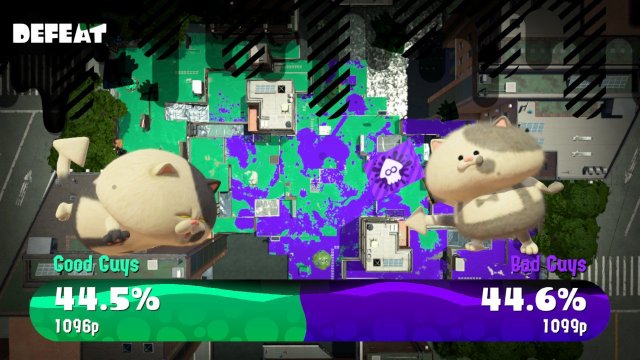
In addition, several stages have objects that react dynamically to the player, such as blocks that expand in size when inked, or rails the player can travel on to take them directly towards the enemy’s side. These small additions have made the remastered stages from the original game a totally different experience, and a heck of a lot more fun.
Next on the list are the numerous small changes and upgrades that weapons and gear have gotten in Splatoon 2. Rollers have more range, and move faster. Chargers can save up their shots while repositioning themselves, allowing for better dodging of enemy attacks. Sloshers are more reactive, and work a little faster than in the original, much to their advantage. The new dualies are high-risk, high-reward as they compliment a style all about getting in the enemy’s face and dodging their shots.
I could go on, but I’d rather summarize the changes rather than bore you with the nitty gritty – weapons are more fun, now, and have more versatility. Old weapons which were boring are now not-boring. No weapon received a nerf, as far as I can tell. In fact, it seems that instead of nerfing weapons that were overpowered, Nintendo decided to to buff every other weapon instead, which was definitely the right choice, gameplay-wise.
The new supers, as alluded to before, change the game drastically. The Inkjet allows you to fly high above the stage, taking potshots at enemies, the Tenta-Missiles allow you to spray and pray at campers on the other side of the map without having to consult your touch screen and take your eyes off the match, and that friggin hamster ball is just so ridiculous I can’t help but adore it.
Oh, and splashdown is a thing. Good luck hitting anyone with it.
One last point to touch on, though, is the soundtrack of the new game. I like it, but I’d like it a whole lot more if I didn’t have to compare it to the soundtrack of the original. Splatoon 2’s music sounds a little anemic compared to the fast, energetic and upbeat tracks from Splatoon. It just doesn’t carry quite the same amount of energy as the first game’s music, which makes me sad, since the music of Splatoon was one of the reasons I adored that game so much.
However, I don’t want to end this on a downer, so let me sum everything up for those that don’t have the patience to read it all: if you liked Splatoon, you’re gonna like Splatoon 2 even more. If you have a Nintendo Switch and you have even the slightest inklination to try it out, I would heartily recommend the game, as it stands right now. I’m sure even more DLC and fun surprises are on the way.
I know, I’m leaving a whole lot out here, but these are just the thoughts that have stuck out to me the most, not a full review. Hopefully, by the time I have 30 hours in this game I’ll be just as excited to play it as I am right now, but only time will tell. Happy splatting!
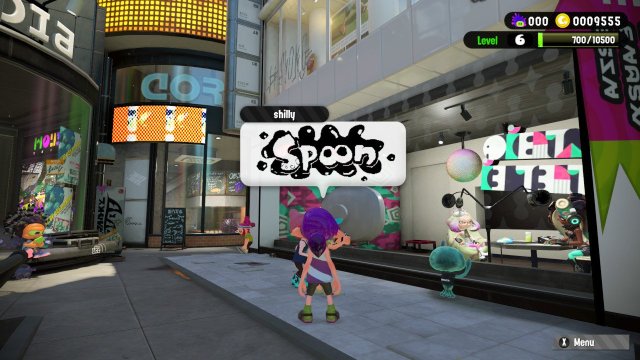
Callie is the best squid
Powered by WPeMatico
